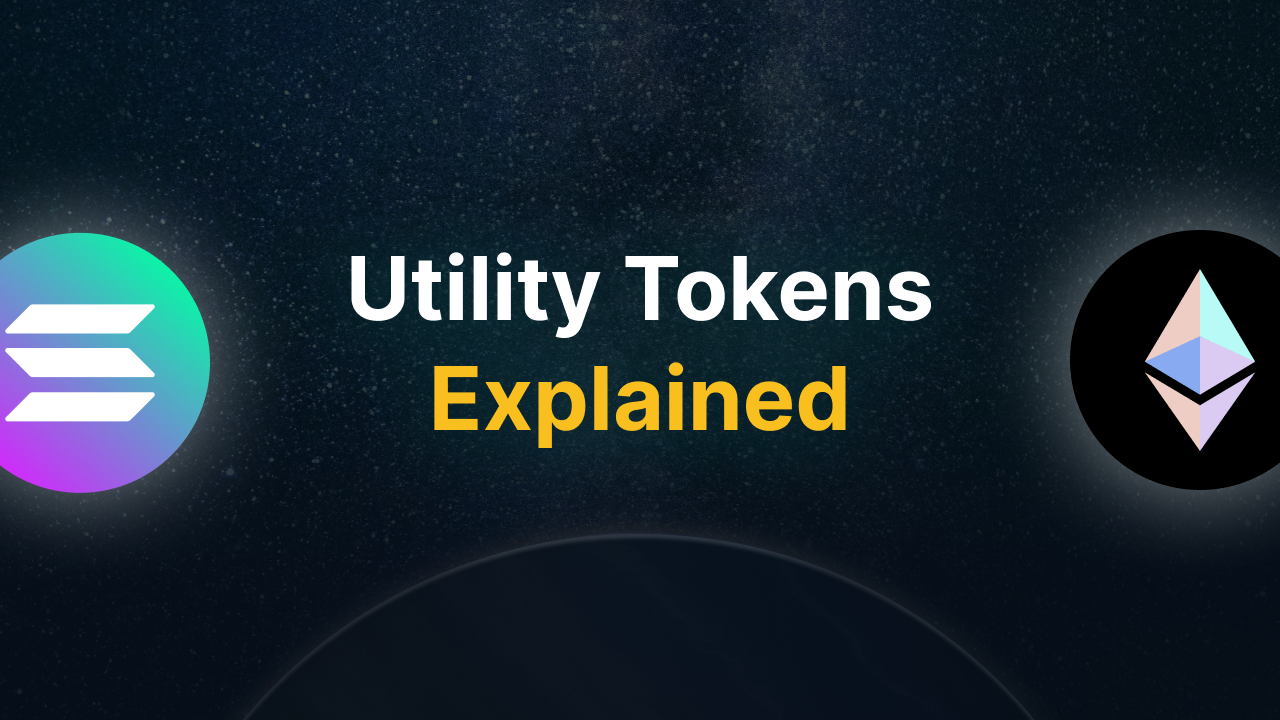Bitcoin vs altcoins: What is price correlation?

What is the price correlation between Bitcoin and altcoins?
The price correlation between Bitcoin and altcoins shows how much movements in the price of Bitcoin are related to those of altcoins. In other words: what usually happens to altcoin prices when Bitcoin rises or falls? There are several techniques to measure correlation, but a commonly used method is the Pearson correlation coefficient, a statistical indicator with a value between +1 (perfect positive) and −1 (perfect negative). In practice, we often see that when Bitcoin rises, many altcoins also perform well, and when Bitcoin drops, many altcoins perform poorly.
Key Takeaways
-
The price correlation between Bitcoin and altcoins shows how much altcoin price movements align with those of Bitcoin. Usually, altcoins rise or fall alongside Bitcoin.
-
The Pearson correlation coefficient statistically measures how strongly the price patterns of two coins resemble each other. A value between 0.70 and 0.90 indicates a strong positive correlation.
-
Bitcoin, due to its market dominance, historical role, and influence on market sentiment, tends to lead altcoins. Where Bitcoin goes, altcoins often follow.
-
Traders themselves reinforce the correlation: when Bitcoin rises, many investors shift to altcoins in hopes of larger profits.
-
Correlation can temporarily weaken due to project-specific news, capital rotation, hype, or regulation. In such cases, altcoins may behave more independently from Bitcoin.
What is the Pearson Correlation between Bitcoin and altcoins?
The Pearson correlation coefficient is a tool that shows how strongly two variables, such as Bitcoin and Ethereum, are statistically connected in terms of price movements. It examines what happens to the Ethereum price when Bitcoin rises or falls. The model always returns a number between -1 and +1:
- +1 means a perfect positive correlation: if Bitcoin rises 5%, the altcoin also rises 5%
- 0 means no correlation
- −1 means a perfect negative correlation: if Bitcoin rises 5%, the altcoin falls 5%
Historically, we see many positive correlations in the crypto market, especially between Bitcoin and major altcoins. Several studies have been conducted on the correlation between cryptocurrencies. One such study by a collaboration between various Indonesian universities researched the 10 largest cryptocurrencies from 2017 to 2022. Their findings show that cryptocurrencies like Ethereum, BNB, and Litecoin often have a correlation with Bitcoin between 0.70 and 0.90, indicating a fairly strong relationship. This means their prices often move in the same direction as Bitcoin.
Take, for example, the correlation between Bitcoin and Ethereum. According to the study, the correlation is 0.9. The prices will therefore usually move in the same direction. If Bitcoin rises because many people are buying Bitcoin, there is a high chance that Ethereum will rise as well.
This doesn’t mean they rise by the same percentage. The Pearson correlation only shows how similar the price patterns are, not the magnitude of the changes. If Bitcoin rises by 5%, this does not mean Ethereum will also rise by 5%. Ethereum might rise by 3% or even 10%. This depends on market conditions. For instance, if there is important Ethereum news that affects its price, Ethereum may rise more than Bitcoin in the short term.
For stablecoins, this is usually different. These tokens are often pegged to fiat currencies or a precious metal like gold. It is likely that USDT correlates almost 1:1 with USDC since they both follow the U.S. dollar. Another characteristic of stablecoins is that especially fiat stablecoins like USD stablecoins have almost no correlation with Bitcoin and altcoins. The correlation is around 0.01 because their value is artificially kept stable, usually around 1 U.S. dollar.
Why is there price correlation between Bitcoin and altcoins?
Bitcoin and altcoins show price correlation for several reasons. The main explanations are summarized below:
Bitcoin is the founding father of the crypto market
Bitcoin is the first cryptocurrency and has been very dominant in the market since its creation. It has always had a large market share. In recent years, Bitcoin’s dominance has often been between 50% and 60%. As a result, Bitcoin has a strong influence on the prices of other cryptocurrencies. If Bitcoin’s dominance temporarily drops, for example to 40% or lower, we can cautiously speak of an altcoin season. This is a term coined by the crypto community (not official) that suggests altcoin prices are rising rapidly while Bitcoin lags behind.
Bitcoin trading pairs as a structural factor
Another major cause of price correlation lies in how many altcoins have historically been traded via Bitcoin trading pairs. On major crypto exchanges, many altcoins are paired with Bitcoin instead of directly with fiat money or stablecoins. As a result, the value of an altcoin is indirectly affected by movements in the Bitcoin price. If Bitcoin drops sharply in value, altcoins priced in BTC must become relatively cheaper to remain attractive. Otherwise, the Bitcoin price would rise significantly against the altcoin, making it unattractive for investors to take risks by investing in the altcoin. This often leads to selling pressure on altcoins, which also lowers their price in dollars. Although more and more altcoins are now traded in stablecoin pairs such as USDT or USDC, the influence of Bitcoin pairs on the market remains strong. This technical connection ensures that Bitcoin’s price movements quickly translate to other cryptocurrencies.
Shared events and sentiment
Market sentiment is a key factor influencing correlation. Major events such as the four-yearly Bitcoin halving, the approval of new ETFs (such as the recent Ethereum ETF), or political impulses like a tweet from the U.S. president can have a huge impact on the entire crypto market. Bitcoin often reacts first to such news: positively to optimistic news or negatively to unfavorable developments. What usually happens next: the rest of the market follows. Altcoins generally move in the same direction, simply because the news affects the entire sector. This is no coincidence but a recurring pattern: where Bitcoin goes, the altcoins follow.
Traders invest in altcoins when Bitcoin rises
Investors themselves also contribute to the high correlation. When Bitcoin starts to rise, traders invest heavily in altcoins in the hope that these will rise more because they are more volatile. This is due to the lower market capitalization of altcoins, which means that buying or selling an altcoin has a greater impact on its price. In this way, traders contribute to correlation. If many traders begin to sell Bitcoin, panic often sets in, and they start selling altcoins too.
What threatens the correlation between Bitcoin and altcoins?
The correlation between Bitcoin and altcoins is often high during bull markets, as well as in bear markets. However, there are also moments when the correlation is lower due to certain developments. Below are some common factors that (temporarily) weaken the correlation:
Project-specific news or developments
When there is news surrounding a specific altcoin, such as a new partnership, major updates, or a hack, it may cause that particular altcoin to rise or fall in value, while the Bitcoin price hardly reacts.
Capital rotation within the market
In the crypto market, we observe clear phases where investors move their capital to profit from price increases or to safeguard funds. This creates an opposite movement between BTC and altcoins, disrupting the correlation. Often, in the early stages of a bull market, traders mainly invest in Bitcoin, as they consider it the safest choice. Especially for new investors, Bitcoin is a logical starting point. In this phase, Bitcoin usually rises faster than altcoins, causing correlation to decrease.
Over time, Bitcoin’s market dominance often drops, and investors dare to take more risks with their capital. They then invest in altcoins in the hope of higher returns (altseason). During this period, correlation decreases because various altcoins rise while Bitcoin barely moves.
During bear markets or when there’s negative market news, correlation can also weaken. Investors then flee back to Bitcoin (as a safe haven) or to stablecoins, causing altcoins to drop significantly in value while Bitcoin drops less or remains relatively stable.
Temporary hypes
Temporary hypes can also weaken the correlation between Bitcoin and altcoins. Think of memecoins, AI or DeFi hypes. During these periods, cryptocurrencies within a specific sector can rise or fall sharply without Bitcoin following suit.
Regional regulations or delistings
Regulations around a specific crypto (such as bans on privacy tokens) or a delisting on a major platform can significantly affect the price of that crypto without impacting Bitcoin or other altcoins.
Final thoughts
The price correlation between Bitcoin and altcoins is a fundamental characteristic of the crypto market. In many cases, altcoins move in the same direction as Bitcoin, which is largely explained by market dominance, shared sentiment, and investor behavior. The Pearson correlation coefficient provides a reliable statistical tool to make this relationship visible. However, correlation is not absolute. Specific news, market dynamics, or external factors such as regulation can cause altcoins to behave more independently from Bitcoin for a time. Understanding this dynamic is essential for anyone actively investing or trading in crypto.




